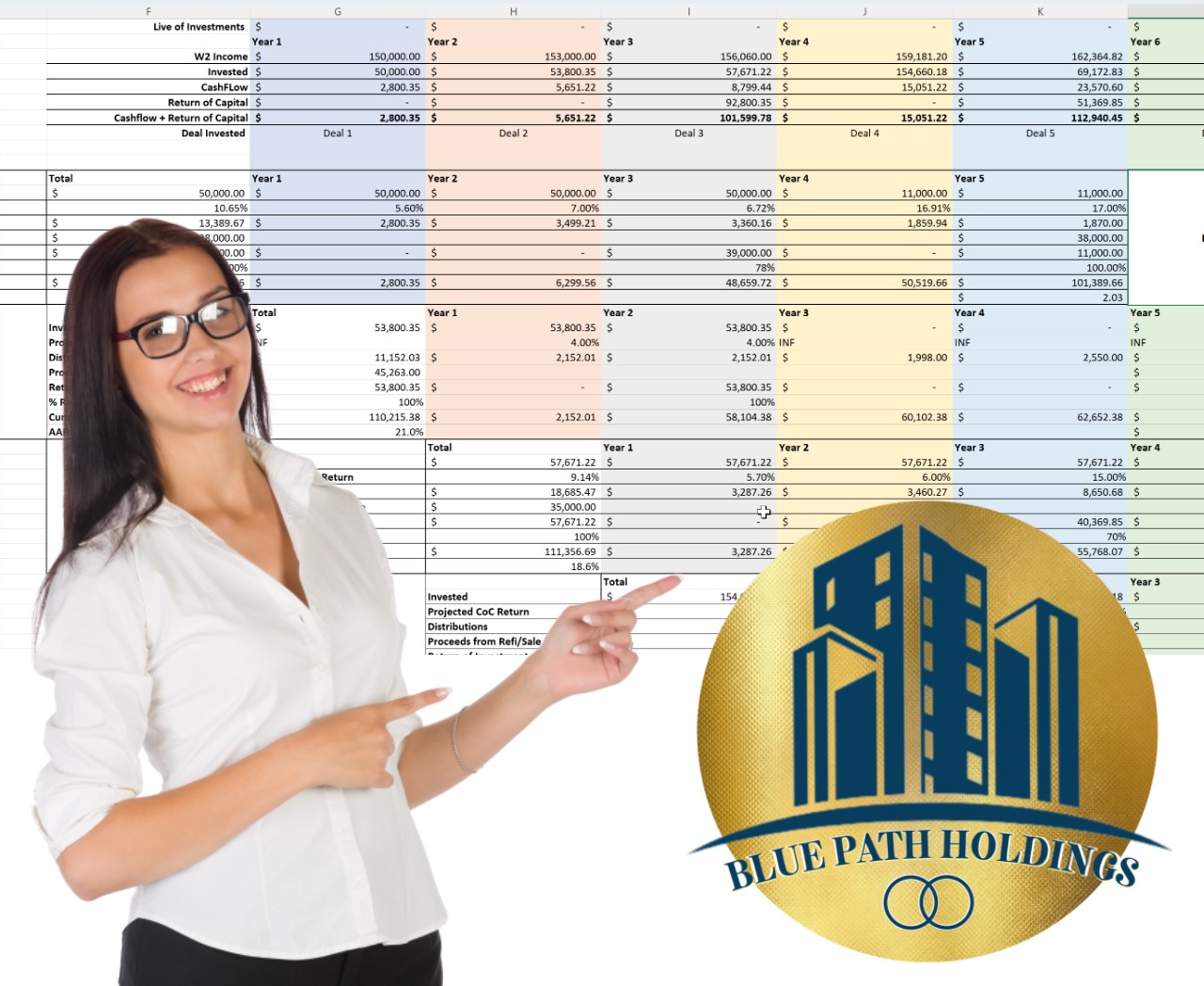The Multifamily Syndication Life Cycle
Investing in a multifamily syndication can be a smart way to passively invest in real estate. A syndication is a pooling of funds from multiple investors to purchase and manage a property. Once the property is purchased, investors become passive and do not have to worry about the day-to-day management of the property. In this blog post, we will discuss the life cycle of a passive investment in a multifamily syndication.
Pre-Investment Stage
The pre-investment stage is the first stage in the life cycle of a passive investment in a multifamily syndication. During this stage, the sponsor will typically present the investment opportunity to potential investors. The sponsor will provide investors with a private placement memorandum (PPM) that outlines the details of the investment, including the investment strategy, the projected returns, the risks involved, and the fees associated with the investment.
Before investing in a syndication, it's important to do your due diligence. This includes researching the sponsor's track record, reviewing the PPM in detail, and understanding the investment strategy. You should also review the syndication's financials and speak with the sponsor directly to ask any questions you may have.
Investment Stage
The investment stage is the second stage in the life cycle of a passive investment in multifamily syndications. During this stage, investors will contribute their capital to the syndication, and the sponsor will use the funds to purchase the property. Once the property is acquired, the sponsor will begin to manage the asset on behalf of the investors, sponsors normally charge an acquisition fee at this stage.
Investors in a multifamily syndication are typically passive and do not have any responsibility in the day-to-day management of the property. The sponsor is responsible for managing the property, making decisions about capital expenditures, and determining when to sell the property.
It is also important to note that during this stage can also benefit from significant tax advantages. Through cost segregation strategies and accelerated depreciation, passive investors can potentially reduce their taxable income and increase their cash flow. Cost segregation is the process of identifying and separating personal property from real property, allowing for accelerated depreciation and potential tax benefits. Accelerated depreciation allows for larger deductions in the early years of property ownership, which can help reduce taxable income and increase cash flow. These tax benefits can be a significant advantage for passive investors, allowing them to increase their returns and achieve their investment goals more quickly. It's important to consult with a tax professional to understand the specific tax implications and benefits of investing in multifamily syndications.
Cash-Flow Distributions & Asset Management Stage
The asset management stage is the third stage in the life cycle of a passive investment in a multifamily syndication. During this stage, the sponsor will manage the property on behalf of the investors. This includes collecting rent, paying bills, managing maintenance and repairs, and dealing with tenant issues, typically sponsors are paid an asset management fee for this work.
The sponsor will also work to increase the value of the property through various strategies. This can include renovating units, increasing rents, or adding amenities to the property. The goal of the sponsor is to increase the net operating income (NOI) of the property, which will increase the overall value of the property.
During the asset management stage, investors will receive regular updates from the sponsor. This can include monthly or quarterly financial statements, as well as updates on any major changes to the property or the investment strategy.
Throughout the holding period, investors can expect to receive regular distributions of cash flow generated by the property. These distributions are typically made on a quarterly or monthly basis, and the amount of the distribution is determined by the syndication's business plan and the property's financial performance.
Sale or Refinance Stage
The sale or refinance stage is the fourth stage in the life cycle of a passive investment in a multifamily syndication. During this stage, the sponsor will determine whether to sell the property or refinance the property to return capital to investors.
If the sponsor decides to sell the property, the proceeds from the sale will be distributed to investors based on their ownership percentage. This will typically result in a capital gain for investors, which is subject to taxes.
If the sponsor decides to refinance the property, the additional funds will be distributed to investors as a return of capital. The sponsor will also typically provide investors with the option to remain invested in the property or to exit the investment at this point, at Blue Path Holdings we like keeping our investors in the investment even after we have return 100% of their capital, this provide infinite returns since there is no capital invested on the property at this point and the investor continues to get cash flow.
Post-Investment Stage
The post-investment stage is the final stage in the life cycle of a passive investment in a multifamily syndication. During this stage, investors will receive their final distribution and will exit the investment.
It's important to note that the post-investment stage is not the end of the relationship, the sponsor might have a new property where the investors can roll their money towards, this also gives the opportunity for the investor to defer taxes via a 1031 exchange.
In summary, investing in a multifamily syndication can be a great opportunity for passive investors looking to generate regular passive income and build long-term wealth. The process of investing involves meeting qualification requirements and reviewing investment documents. The timeline of the investment includes acquisition, management, and operation of the property over a 5-7 year period. Finally, investors can expect to receive regular distributions of cash flow throughout the holding period and a return of capital at the end of the investment. If you're interested in learning more about passive investments in multifamily syndications, we invite you to schedule a call with us CLICK HERE or download our free e-book at the link https://content.bluepathholdings.com/free-ebook.

 By
By


